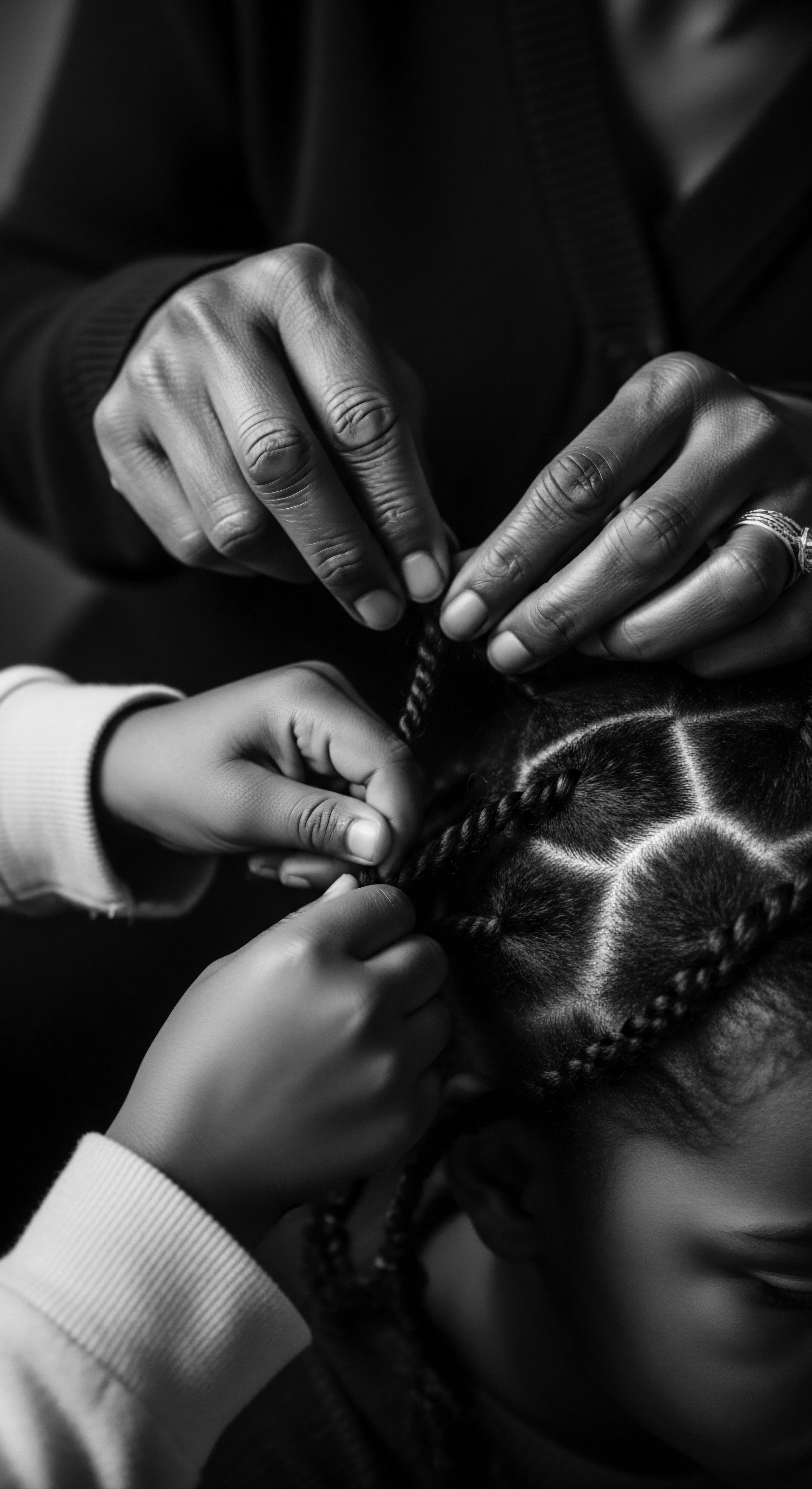
Roots
For those of us whose lineage holds the rich, spiraling stories of textured hair, the very strands speak of an enduring heritage. It’s a language understood not just in the gentle curl or the tight coil, but in the echoes of hands that have tended, shielded, and adorned it across millennia. We seek to understand how ancient cultures guarded this crown, for in their ingenious methods, we uncover not only historical practices but also fundamental truths about hair’s intrinsic needs and the profound connection to ancestral wisdom.
Our journey into hair’s deep past begins not with intricate styles, but with its very structure, a biological blueprint shaped by eons. Textured hair, whether it be coily, kinky, or wavy, carries a distinct architecture. Its elliptical cross-section, the unique way its keratin proteins bond and twist, creates its characteristic curl pattern. This structure, while magnificent, also presents specific vulnerabilities.
The bends and curves along the hair shaft create natural points of fragility, making it prone to dryness and breakage. Ancient caretakers, through generations of keen observation, recognized these inherent qualities long before microscopes revealed cellular intricacies. They understood, with an intuitive grasp, that hair required a different kind of shielding, a care rooted in its unique nature.
Ancestral wisdom offered profound insights into safeguarding textured hair, recognizing its unique structure and inherent vulnerabilities through generations of careful observation.
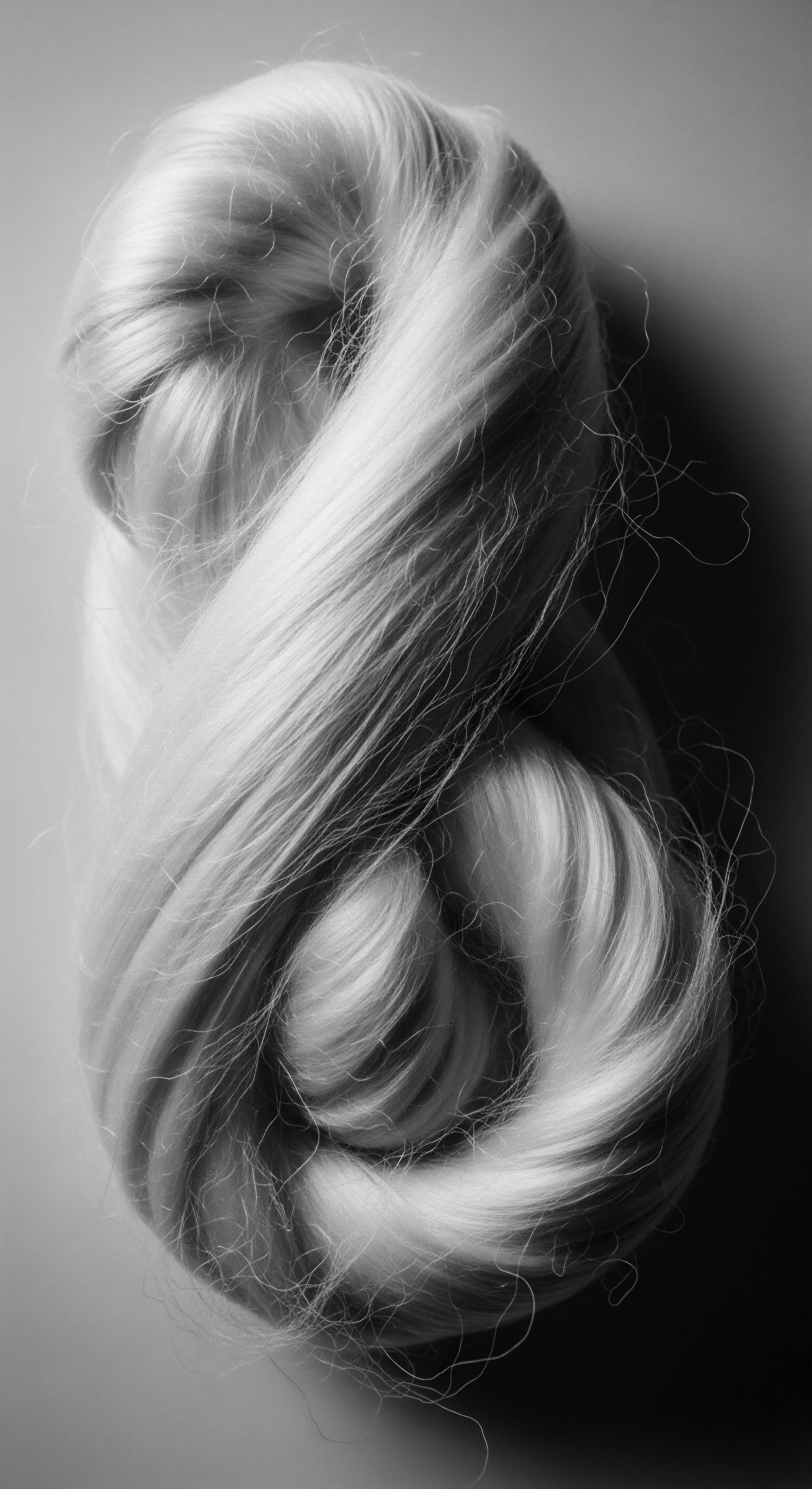
Hair’s Earliest Protectors
The earliest caretakers of textured hair did not possess scientific laboratories, yet their wisdom was undeniable. Their knowledge stemmed from deep observation of the natural world and the properties of indigenous flora. They learned about the moisturizing capabilities of certain plant oils, the cleansing properties of specific clays, and the strengthening powers of various herbs. These were not mere cosmetic applications; they formed a continuum of practices designed to maintain the hair’s physical well-being against environmental aggressors.
Sun, dust, arid winds, and even the daily abrasion of life posed constant threats. Ancient communities, often dwelling in harsh climates, developed sophisticated routines that mitigated these challenges. Think of the protective qualities of shea butter in West African communities, its ability to seal in moisture and provide a barrier against intense sun. Or consider the meticulous application of plant extracts by indigenous Amazonian peoples, fostering scalp health and strand strength. These were not haphazard acts but routines born from a deep connection to their surroundings and a recognition of hair as a vital aspect of health and cultural identity.
The ways ancient peoples shielded their hair were often intertwined with their daily lives, their spiritual beliefs, and their social structures. Hair was rarely a standalone entity; it was a living extension of self and community. This holistic approach meant that protecting hair was not separate from protecting the body, the spirit, or the cultural legacy.
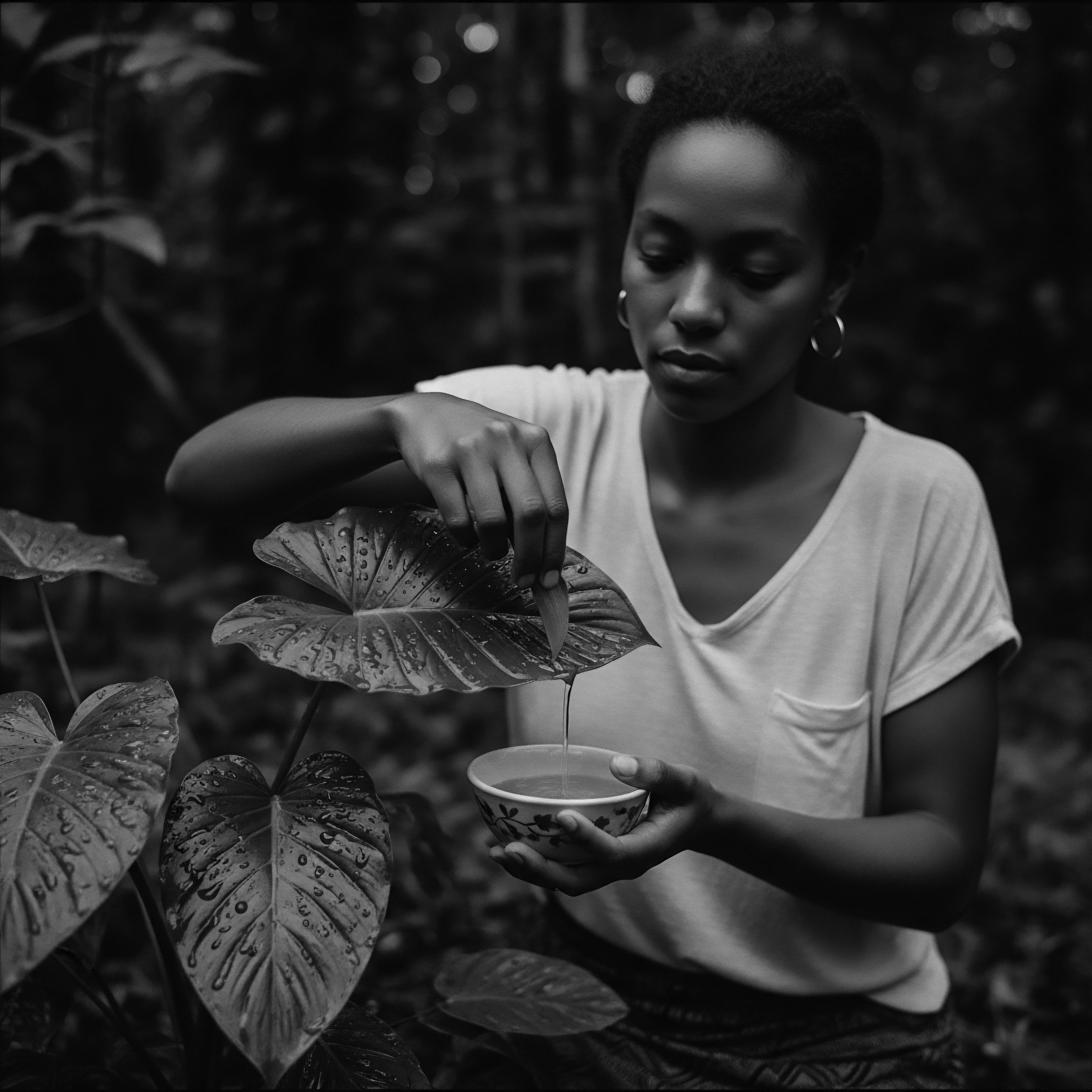
What Can Ancient Hair Anatomy Tell Us About Modern Care?
Understanding the fundamental anatomy of textured hair, as intuited by ancient communities, offers striking parallels to modern trichology. The very spiral of a coiled strand, for instance, means that natural oils produced by the scalp struggle to travel down the shaft, leaving the ends particularly susceptible to dryness. This inherent dryness, a biological reality, is something ancient cultures compensated for through regular oiling and moisturizing rituals. They intuitively practiced what contemporary science now confirms ❉ textured hair requires consistent external moisture and lipid replenishment to maintain its suppleness and resilience.
- Shea Butter ❉ Utilized across West Africa for its deep moisturizing and protective qualities, shielding hair from sun and harsh elements.
- Argan Oil ❉ A Moroccan staple, prized for its restorative properties on dry, brittle hair, providing strength and elasticity.
- Chebe Powder ❉ From Chad, a blend of herbs that, when applied, coats the hair shaft to prevent breakage and allow for significant length retention.
The resilience of textured hair, despite its perceived fragility, is a testament to millennia of adaptive care. The methods developed by our ancestors allowed for growth, for health, and for expression, even in environments that could be unforgiving. This deep-seated knowledge, passed down through generations, laid the foundation for the haircare traditions many Black and mixed-race individuals still practice today. It is a powerful reminder that our heritage holds practical solutions, not just historical anecdotes.
| Ancient Practice Regular Oil Application (e.g. Shea, Palm) |
| Observed Benefit Softened hair, reduced breakage, added luster. |
| Modern Scientific Link Lipid barrier reinforcement, reduced hygroscopic swelling, cuticle smoothing. |
| Ancient Practice Protective Styles (Braids, Twists) |
| Observed Benefit Kept hair contained, less tangling, prevented sun damage. |
| Modern Scientific Link Minimized mechanical stress, reduced environmental exposure, length retention. |
| Ancient Practice Herbal Rinses and Infusions |
| Observed Benefit Soothed scalp, promoted growth, conditioned hair. |
| Modern Scientific Link Anti-inflammatory properties, antimicrobial action, mild conditioning agents. |
| Ancient Practice The enduring wisdom of ancient hair protection methods often finds validation in contemporary scientific understanding. |
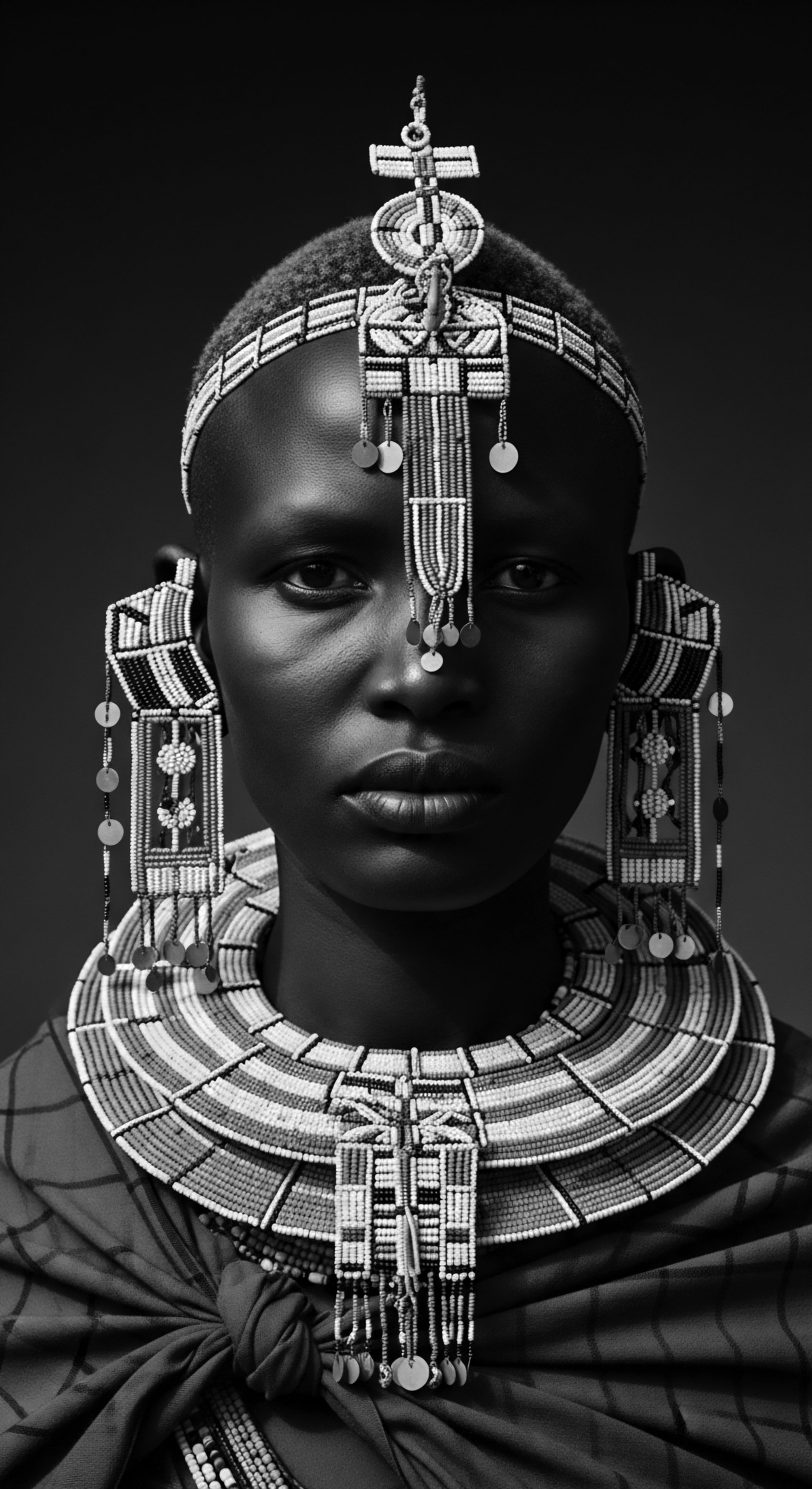
Ritual
Beyond the foundational understanding of hair’s physical needs, ancient cultures enshrined hair care within elaborate rituals, transforming protective measures into acts of reverence, community, and identity. These practices were not mundane chores; they were living expressions of cultural values, often laden with spiritual meaning and social significance. The ways of shielding hair became a tender thread, connecting individuals to their lineage and their community, weaving a history of care and aesthetic purpose.
Consider the profound significance of braiding in many African cultures. This was seldom a solitary act. Gatherings around a central figure, often an elder woman, meant that braiding became a communal activity, a space for storytelling, the sharing of wisdom, and the strengthening of familial bonds. The time spent in these sessions allowed for meticulous attention to each strand, applying natural emollients and herbs as the braids were formed.
These styles—cornrows, twists, and various intricate patterns—were inherently protective. They minimized exposure to environmental elements, reduced tangling, and shielded the delicate ends, promoting length retention and overall hair health. This was the practical side of protection, but woven into it was the spiritual—the belief that hair, as the highest point of the body, was a conduit to the divine, a sacred antenna connecting one to ancestors and the spirit world. To protect the hair, then, was to protect this sacred connection.
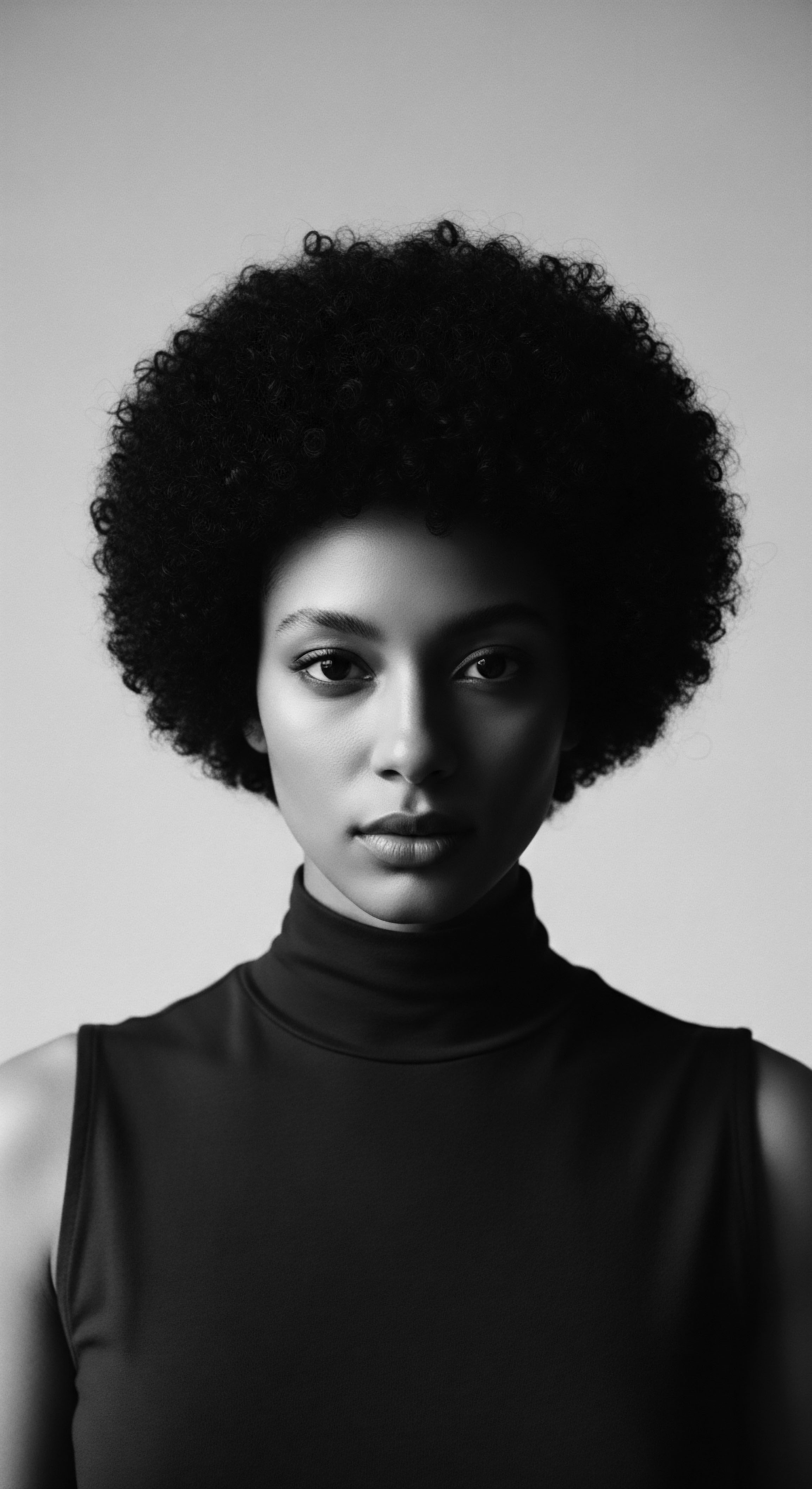
How Did Ancient Hair Styling Safeguard Physicality and Spirit?
The very act of styling in many ancient societies served as a primary means of protection. Headwraps, for instance, found in cultures from ancient Egypt to West Africa, offered tangible protection against the sun’s harsh rays and dust. These wraps also communicated social status, marital status, or even religious affiliation. The intricate coiffures of ancient Egyptian nobility, often augmented with wigs and hair extensions, were meticulously crafted and maintained.
These extensions, made from human hair or plant fibers, provided volume and length while also serving a protective function by distributing tension and offering a layer of defense to the wearer’s natural hair. This layering, whether through extensions or elaborate styling, effectively shielded the scalp and hair from direct environmental exposure.
Ancient styling practices, from intricate braids to ceremonial headwraps, doubled as robust forms of hair protection, safeguarding strands from environmental elements and communicating cultural identity.
Beyond external adornments, internal health rituals were equally important. Ancient wellness advocates understood that the vitality of hair stemmed from within. Diets rich in nutrient-dense foods, often dictated by seasonal availability and indigenous agriculture, supported healthy hair growth. Certain herbs and root extracts were consumed or applied topically, believed to nourish the scalp and strengthen the follicle.
For instance, the Mursi and Surma women of Ethiopia often incorporate ochre and butter into their elaborate hair traditions, forming a paste that provides both aesthetic adornment and significant environmental shielding for their coiled hair textures. This rich, reddish-brown paste forms a protective barrier against sun, wind, and dust, simultaneously conditioning the hair and scalp. This practice, documented by researchers such as Joanna E. M.
Barnes (2018), highlights a specific historical example where practical protection is deeply intertwined with cultural expression and a distinctive aesthetic. (Barnes, 2018) This powerful illustration underscores how the physical safeguarding of hair was rarely separate from the broader cultural and spiritual life of a community.
The ritual of hair care in these ancient societies was a holistic endeavor. It honored the hair’s physical integrity while acknowledging its deeper spiritual and social roles. The tools used—combs fashioned from bone or wood, natural fiber brushes, simple earth-based pigments—were extensions of this philosophy, crafted with respect for the material and the hair it would tend.
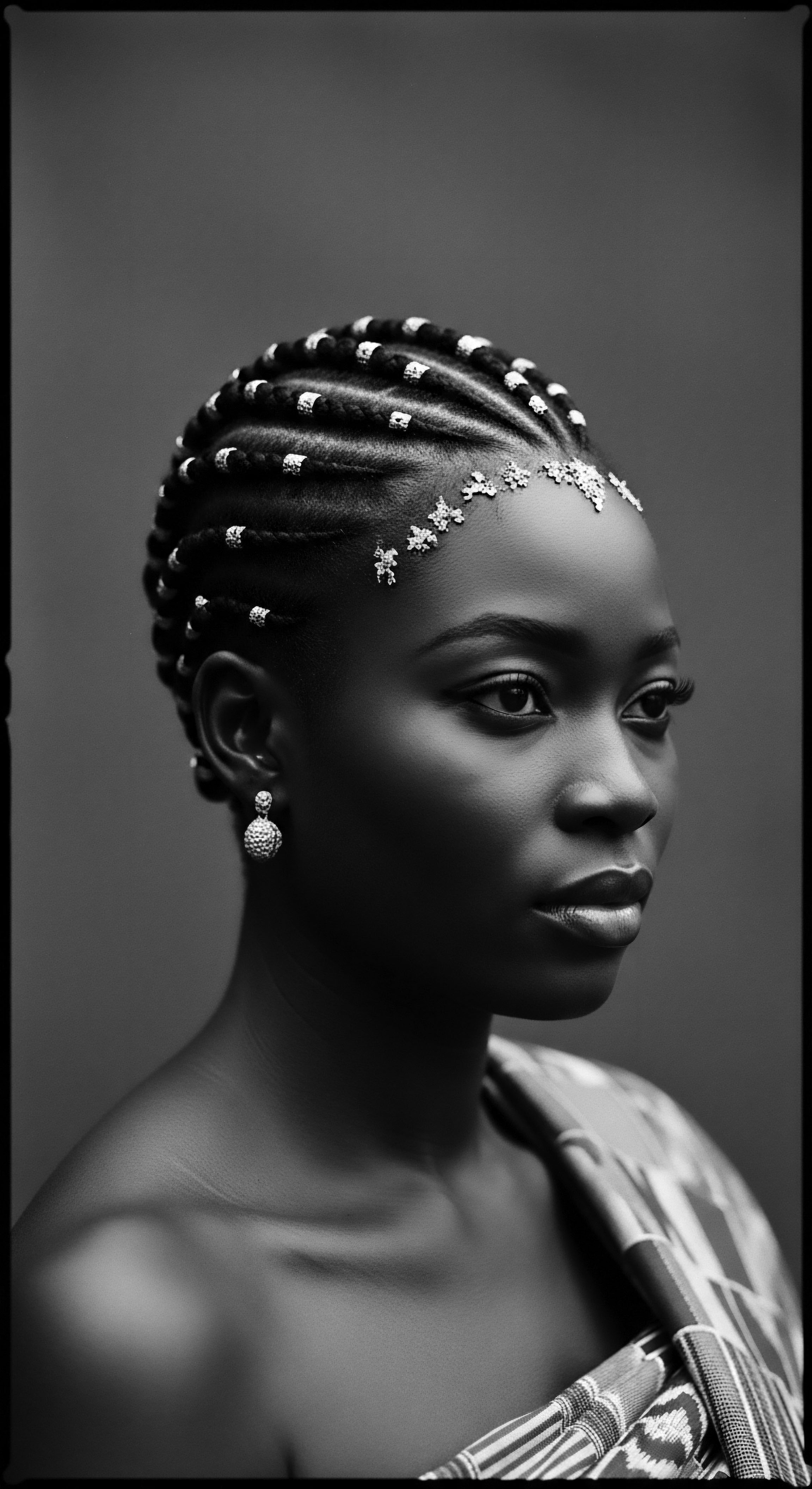
How Were Protective Styles Developed Across the Diaspora?
The development of protective styling techniques is a testament to the ingenuity of Black and mixed-race cultures across the diaspora. When people were forcibly displaced, their hair traditions, often carried within the very structure of their hair and the memory of their hands, traveled with them. Enslaved Africans, stripped of many aspects of their cultural identity, held onto hair braiding as a means of communication, resistance, and protection.
Styles like cornrows, for example, were used to convey messages or even map escape routes. These practices also literally protected their hair under brutal conditions, minimizing damage from harsh labor and lack of access to traditional care.
- Cornrows ❉ Deeply rooted in African history, these close-to-the-scalp braids protected hair from breakage and environmental factors, often carrying symbolic or practical messages.
- Bantu Knots ❉ A versatile protective style originating in Southern Africa, offering curl definition and length preservation while shielding ends.
- Twists ❉ Widely practiced across the African diaspora, two-strand twists protect hair, reduce tangling, and serve as a foundation for other styles.
The transmission of these styles across generations, often taught from grandmother to mother to daughter, ensured the survival of these protective practices. It is a story of resilience, where the art of hair care became a quiet act of defiance and continuity. The protection offered by these styles was not just physical; it was also a shield for cultural memory and identity in the face of immense adversity. The legacy of these rituals lives on, affirming the deep connection between hair protection and cultural survival.
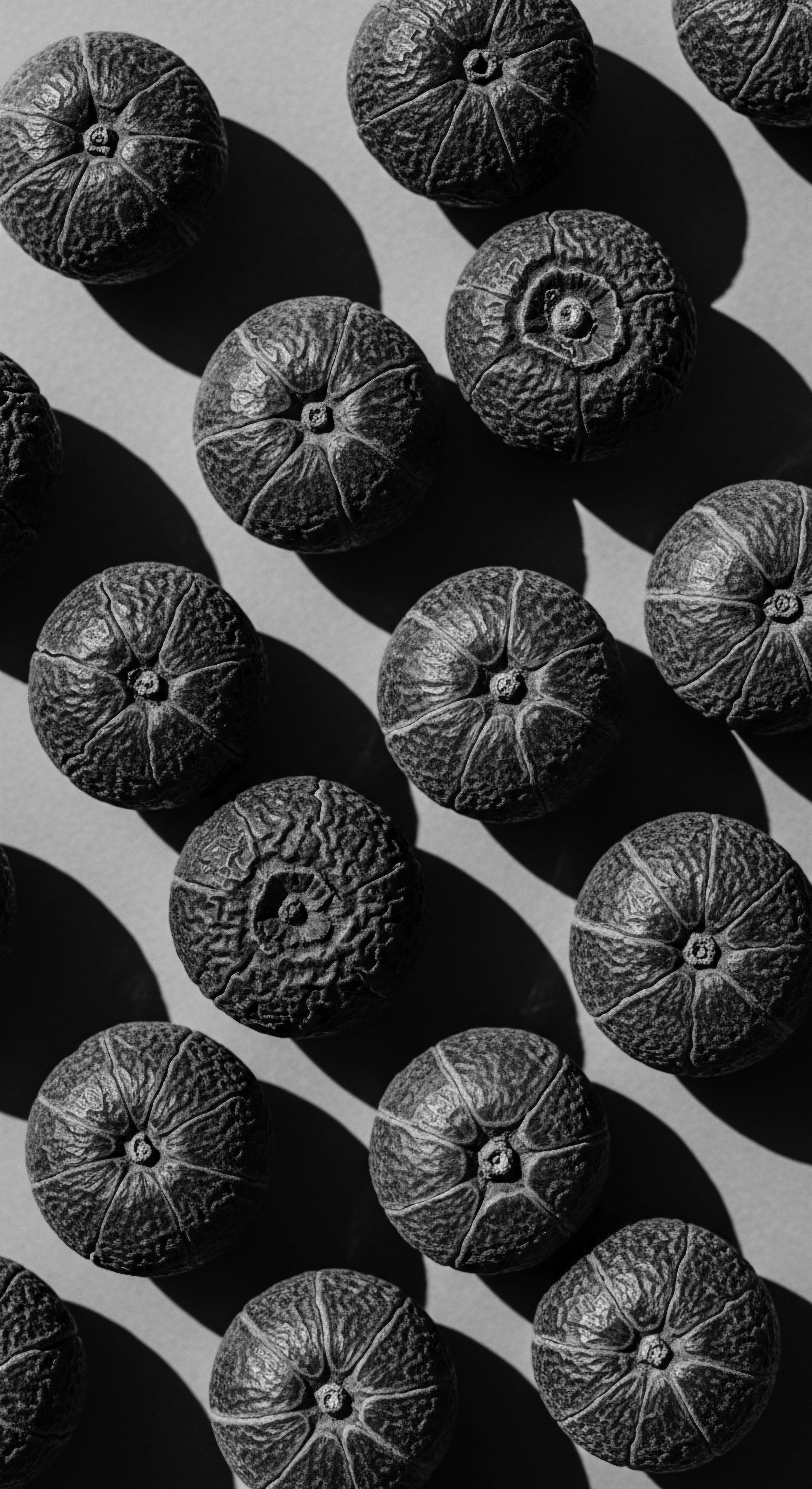
Relay
The practices of hair protection, birthed in antiquity, did not fade with the passage of time. Instead, they were relayed across generations, adapting, evolving, and carrying with them the wisdom of our forebears. This intergenerational transmission of knowledge forms the very essence of textured hair heritage, a living library where ancestral ingenuity meets contemporary understanding. The continuum of care from ancient civilizations to present-day textured hair practices showcases a remarkable endurance of strategies designed to preserve hair health and honor its cultural importance.
The understanding that hair requires particular shielding was a lesson learned and relearned, passed down through the gentle touch of a mother’s hands on a child’s head, in the quiet wisdom shared amongst women, and through observation of the natural world. This relay involved not only specific techniques but also a philosophy of hair as something sacred, something connected to one’s being and one’s place in the world. Hair was a powerful visual cue, communicating age, status, group affiliation, and spiritual devotion. Protecting it became an act of self-preservation and cultural affirmation.
For instance, the Maasai people of East Africa historically used red ochre and animal fat to coat their hair, forming long, intricate dreadlocks that were both symbolic and protective. This practice not only conveyed social standing but also shielded the hair from the harsh sun and dust of the savanna.
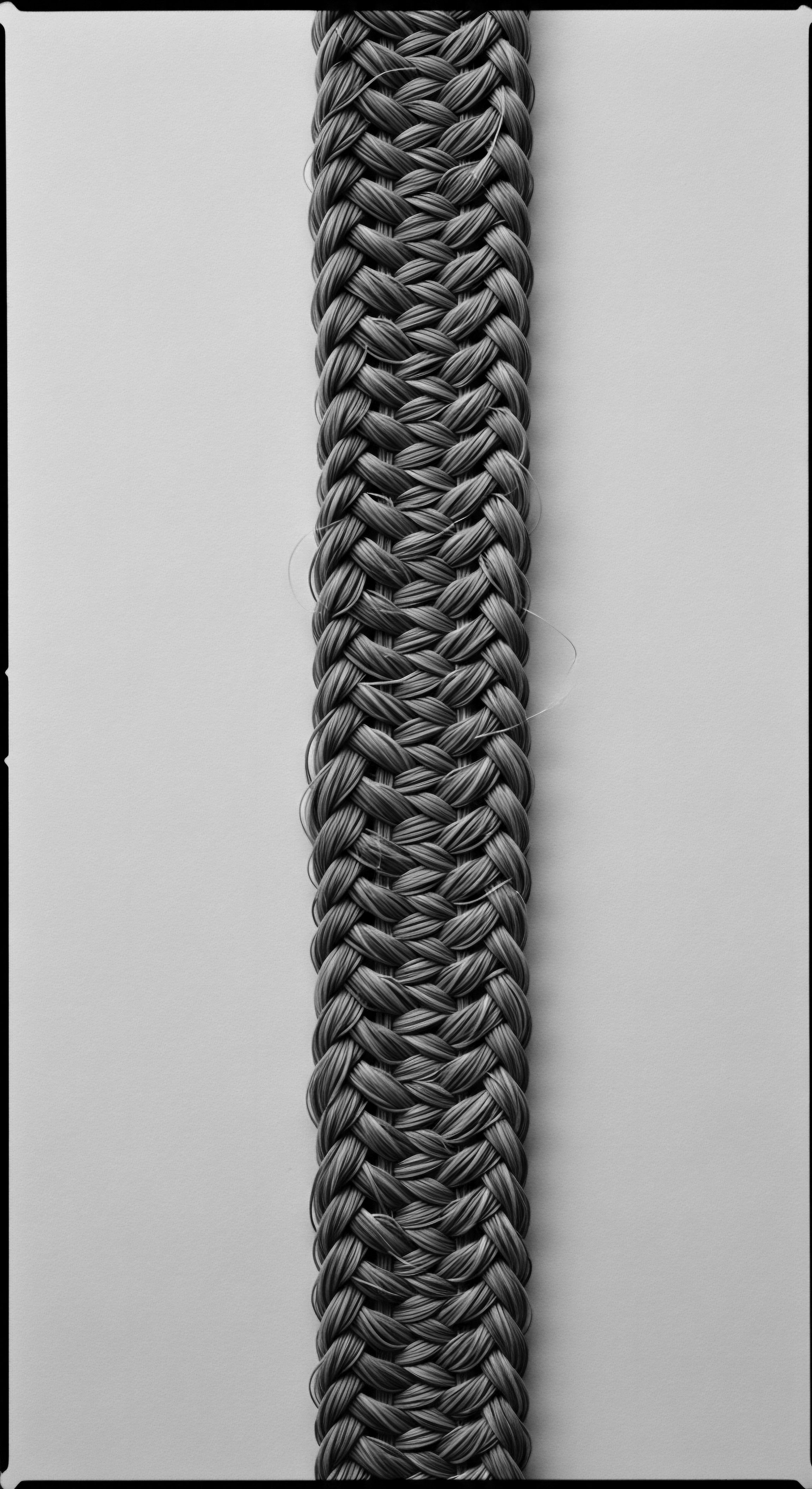
How Has Ancestral Wisdom Shaped Modern Hair Practices?
The echoes of ancient protective practices are distinctly audible in the current landscape of textured hair care. Many modern natural hair regimens consciously or unconsciously draw upon centuries-old wisdom. The emphasis on moisturizing, sealing, and protective styling—the very cornerstones of effective textured hair care today—mirror the routines adopted by ancient communities.
For instance, the use of hair wraps and scarves for nighttime protection, a practice prevalent in many Black communities today, has direct parallels to the use of headwraps for sun protection and adornment in ancient Egyptian, West African, and Nubian cultures. These historical coverings often served to keep hair clean, protected from environmental elements, and preserved intricate styles while sleeping.
The meticulous oiling practices of ancient peoples, applying botanical infusions to nourish the scalp and hair, find their contemporary validation in the scientific understanding of emollients and humectants. These ancient mixtures, often bespoke to local flora, provided lubrication to the hair shaft, reducing friction and preventing breakage, particularly crucial for the delicate structure of textured hair. They understood that healthy hair was supple hair, and that suppleness required consistent nourishment from the outside, complementing the nutrition from within.
The enduring relay of protective hair practices from ancient times informs current textured hair care, emphasizing moisture, sealing, and strategic styling as vital elements of ancestral wisdom.
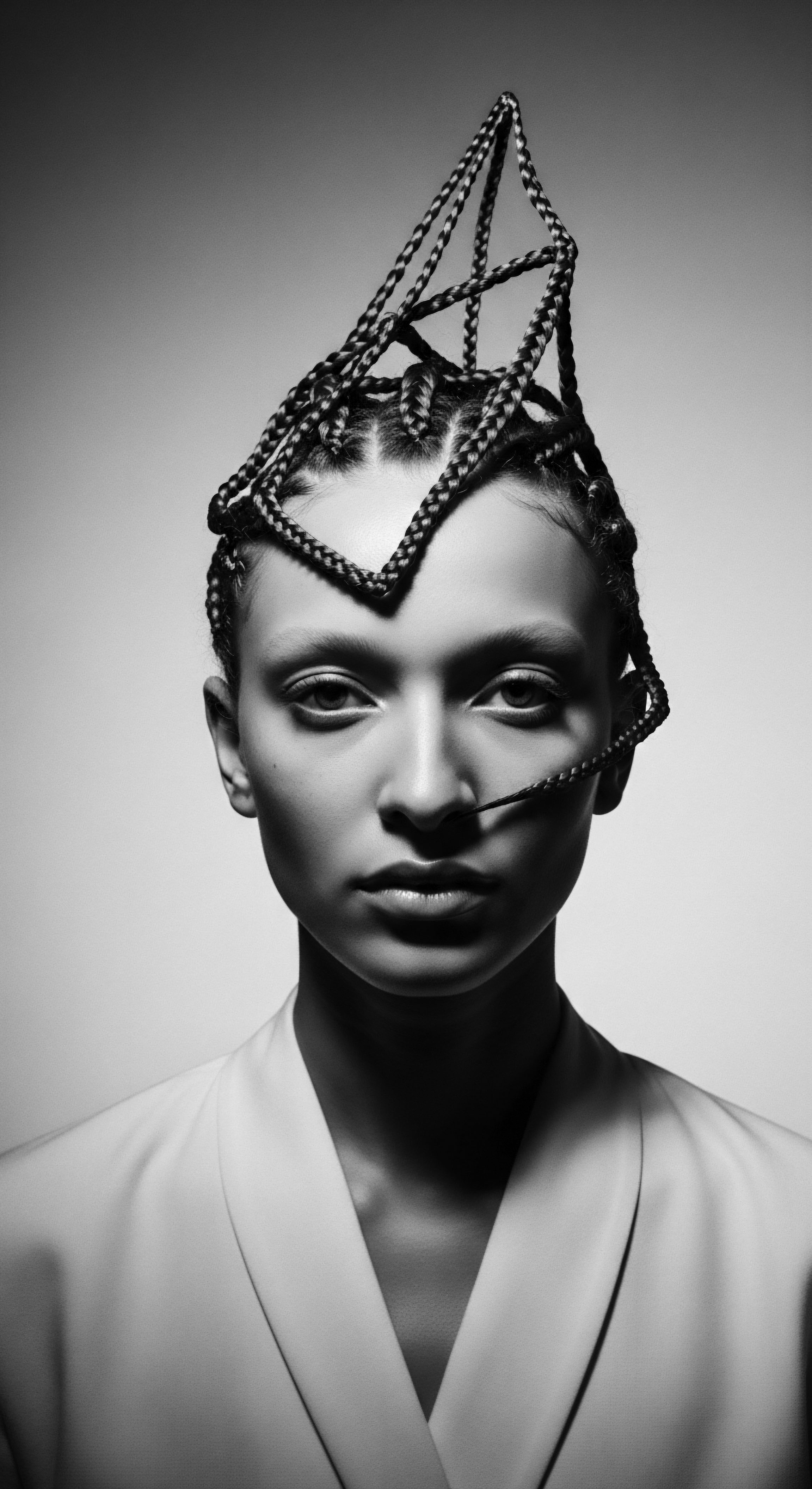
What Are the Enduring Legacies of Ancient Hair Care?
The resilience of textured hair, often subjected to historical oppression and attempts to strip it of its cultural meaning, owes much to these protective legacies. The ability to maintain hair health and length, even under duress, allowed Black and mixed-race communities to retain a visible link to their heritage. This link was often a powerful symbol of identity and resistance. The very act of caring for textured hair, using methods passed down through generations, became a subversive act, affirming self-worth and cultural continuity in the face of systemic devaluation.
The enduring value of these ancestral practices extends beyond mere aesthetics; they carry a profound well-being aspect. The communal rituals of hair care, the generational sharing of knowledge, and the deep connection to nature’s offerings, fostered a sense of belonging and self-acceptance. This holistic approach to hair care, where physical protection is interwoven with emotional and spiritual sustenance, remains a powerful teaching from our ancient lineage. It prompts us to consider our hair not simply as strands, but as living history, a direct line to the ingenuity and resilience of our ancestors.
| Culture/Region Ancient Egypt |
| Key Protective Practices Wigs, extensions, oiling with castor, moringa, almond oils; head coverings. |
| Enduring Legacy/Modern Connection Precursor to wigs as protective styling; emphasis on oil treatments for conditioning and shine. |
| Culture/Region West Africa (Pre-colonial) |
| Key Protective Practices Intricate braiding patterns (cornrows, twists), use of shea butter, palm oil, plant extracts. |
| Enduring Legacy/Modern Connection Foundation of diverse protective styling; continued use of natural oils for moisture and length retention. |
| Culture/Region Nubian Civilizations |
| Key Protective Practices Braiding, elaborate coiffures, use of kohl and scented oils for scalp and hair. |
| Enduring Legacy/Modern Connection Influence on braiding traditions; appreciation for hair as a canvas for cultural expression and health. |
| Culture/Region Indigenous Americas |
| Key Protective Practices Herbal infusions (e.g. yucca, aloe), animal fats, minimal manipulation, long braids. |
| Enduring Legacy/Modern Connection Validation of plant-based remedies; minimal manipulation as a protective strategy; emphasis on natural growth. |
| Culture/Region The varied approaches to hair protection across ancient cultures highlight a shared respect for hair's vitality and its central role in identity. |
The lessons from these historical practices are not just about what to use, but how to approach hair itself ❉ with respect, with intention, and with an understanding of its deep connections to our past and present. The traditions of sealing, moisturizing, and protecting, handed down through countless generations, continue to serve as a beacon, guiding us toward harmonious relationships with our textured strands.
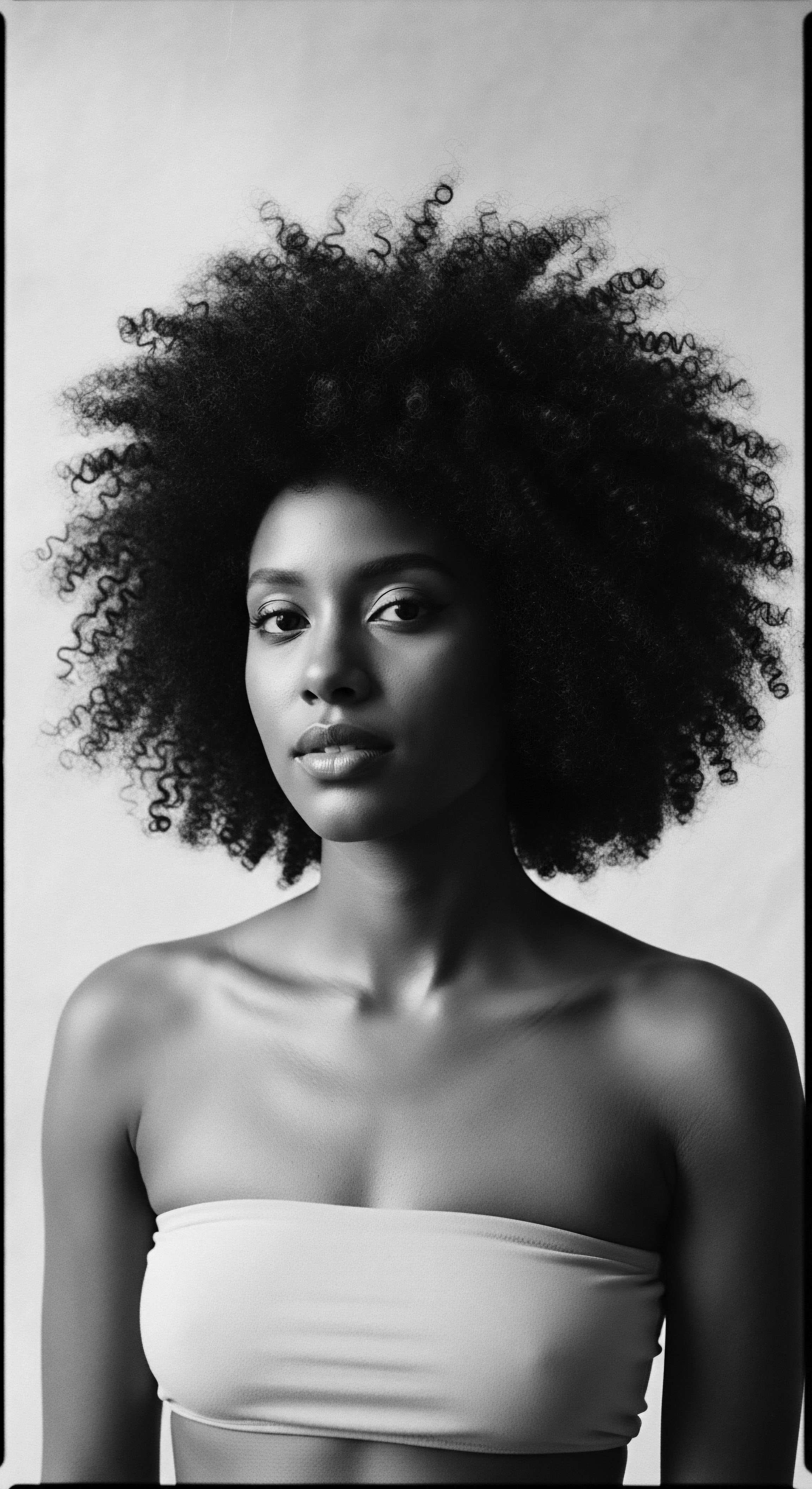
Reflection
As we gaze upon the intricate journey of how ancient cultures shielded their hair, particularly the profound wisdom applied to textured hair, we sense a living archive unfolding before us. It’s more than a historical study; it is a communion with ancestral hands, a recognition of ingenuity born from necessity and reverence. The strategies employed, from the earliest infusions of plant oils to the elaborate construction of protective styles, speak to a deep understanding of hair’s inherent nature and its profound cultural significance.
This exploration reaffirms that our textured strands are not merely biological filaments; they are living testaments to resilience, creativity, and the enduring power of heritage. Each coil, each kink, each wave carries the whispers of those who came before us, guardians of a knowledge that transcends time. The ‘Soul of a Strand’ ethos, indeed, finds its deepest resonance in this lineage of care, reminding us that every touch, every product, every deliberate styling choice we make today is an act of continuation, a homage to the continuum of ancestral wisdom.
The path from ancient safeguarding to modern regimens is not a linear progression from primitive to advanced. Rather, it is a circular dance, where contemporary science often validates the efficacy of age-old practices. This conversation between past and present allows for a fuller, more enriched understanding of what it means to truly care for textured hair. We are not just preserving hair; we are preserving legacy, honoring identity, and continuing a tender relay of knowledge that binds us to our roots and guides us into the future.
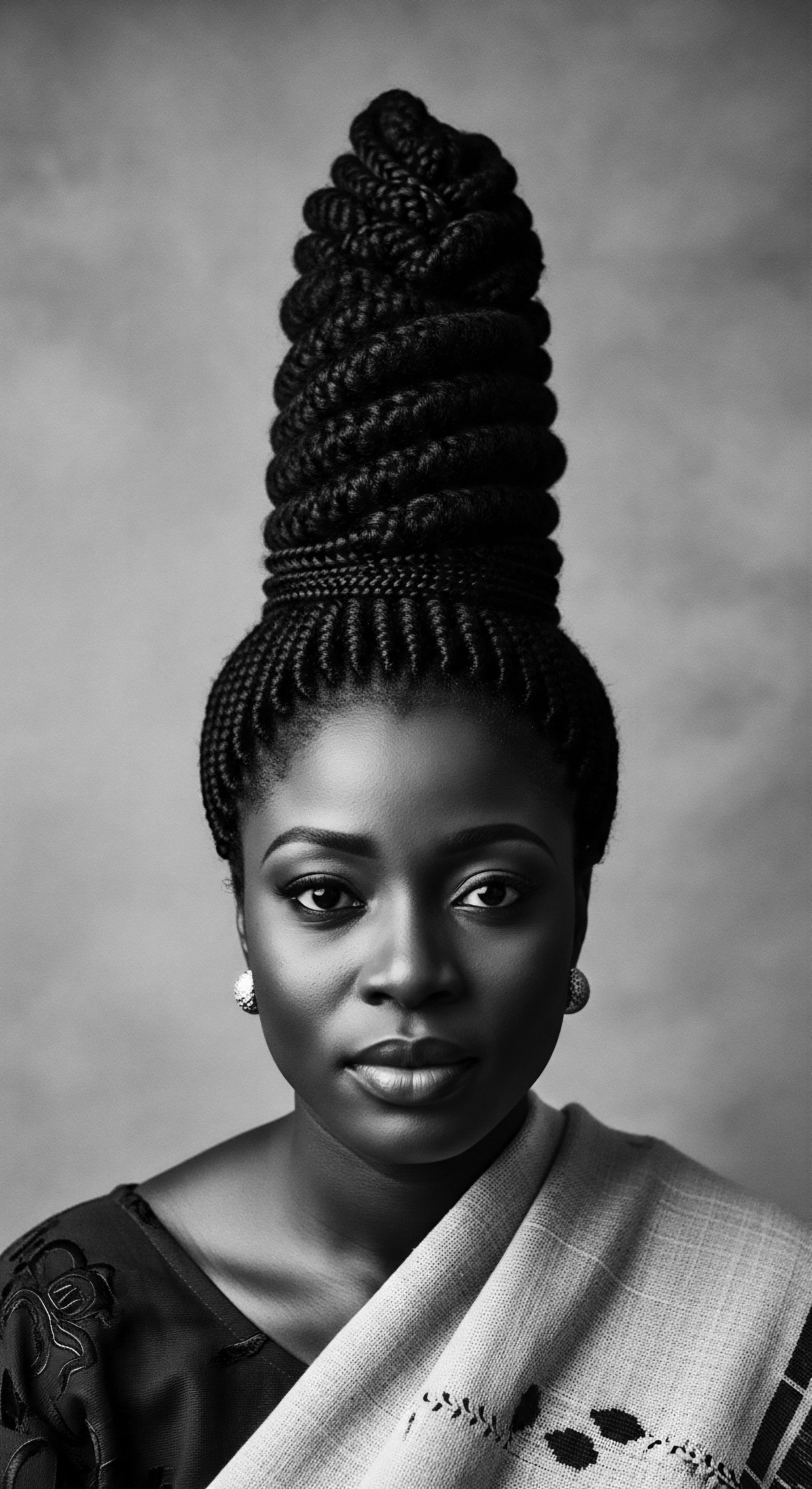
References
- Barnes, Joanna E. M. (2018). African Hairstyles ❉ Secrets of the Surma and Mursi Tribes. Cultural Hair Research Press.
- Blakely, Allison. (1993). African-American Hair ❉ Past and Present. University of Illinois Press.
- Byrd, Ayana D. & Tharps, Lori L. (2014). Hair Story ❉ Untangling the Roots of Black Hair in America. St. Martin’s Press.
- De Beauvoir, Simone. (1949). The Second Sex. (H. M. Parshley, Trans.). Alfred A. Knopf. (Relevant for broad cultural context on beauty and self-presentation)
- Erlmann, Veit. (2000). Hair in African Art and Culture. The Metropolitan Museum of Art.
- Mercer, Kobena. (1994). Welcome to the Jungle ❉ New Positions in Black Cultural Studies. Routledge. (Relevant for discourse on Black hair as cultural expression)
- Opoku, Kwabena. (1978). African Traditional Religion ❉ An Introduction. McGraw-Hill. (Relevant for spiritual significance of hair)
- Puzo, Daniel. (2014). Cosmetic and Medical Global Practices in History ❉ A Comparative Approach. Springer. (Relevant for historical cosmetic practices)
- Sweetman, David. (1984). Women Leaders in African History. Heinemann Educational Books. (Relevant for broader cultural and historical context)
- Walker, A’Lelia Bundles. (2001). On Her Own Ground ❉ The Life and Times of Madam C. J. Walker. Scribner. (Relevant for the development of Black haircare traditions)
